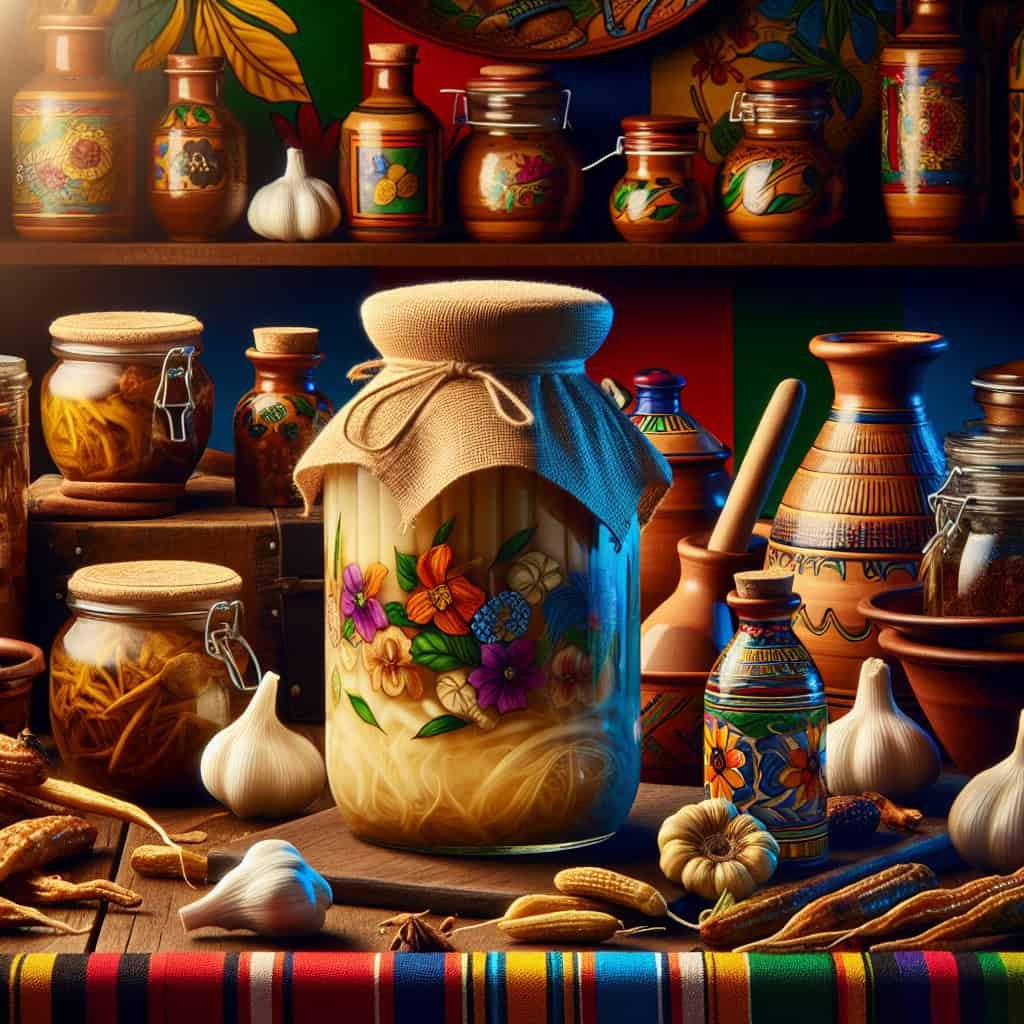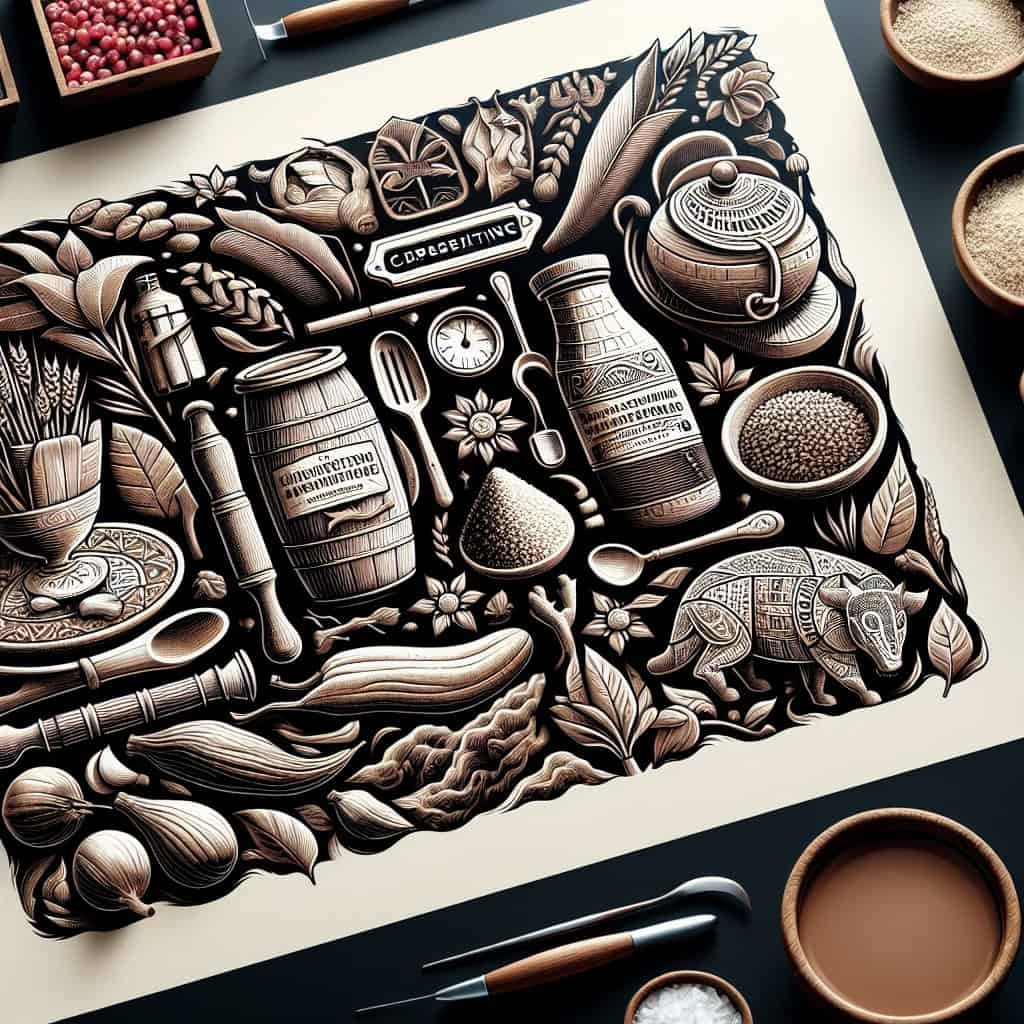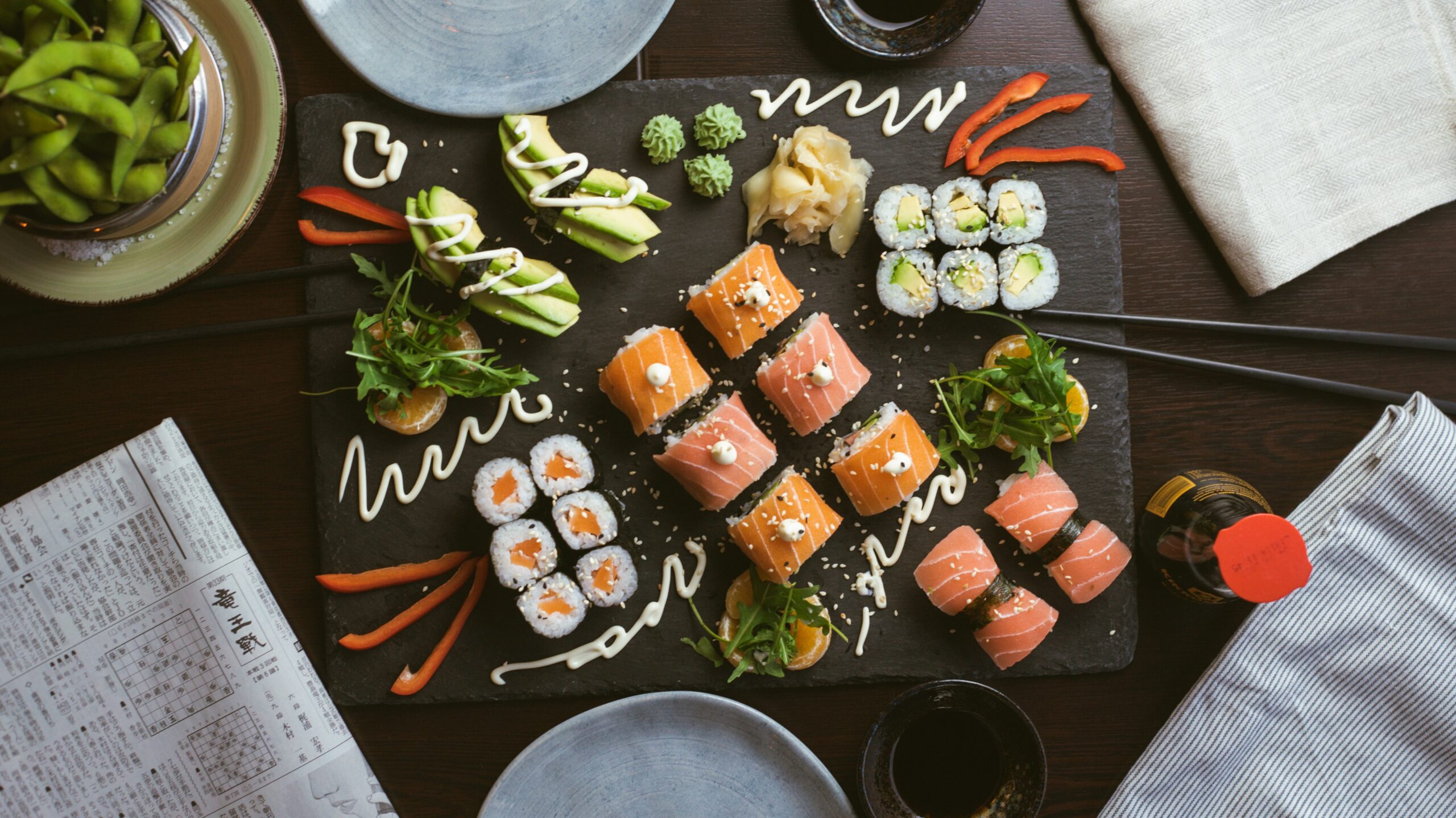Nicaraguan cuisine offers a delightful fusion of flavors and textures that are sure to tantalize your taste buds. From hearty stews to fresh ceviche, the country’s culinary landscape is rich with diverse dishes. But have you ever wondered if there are any traditional Nicaraguan recipes that incorporate ancient preservation techniques or fermented ingredients? In this article, we will explore the vibrant world of Nicaraguan cuisine and discover the intriguing ways in which traditional preservation methods and fermented ingredients have shaped the local food culture. So get ready to embark on a gastronomic adventure as we delve into the delicious world of Nicaraguan dishes.

Introduction
Nicaraguan cuisine is a vibrant and delicious reflection of the country’s rich cultural heritage. It combines indigenous flavors with influences from Spanish, African, and Caribbean traditions. One aspect that sets Nicaraguan cuisine apart is its use of traditional preservation methods and fermented ingredients. These techniques have been passed down through generations and play a significant role in the country’s culinary history. In this article, we will explore the overview of Nicaraguan cuisine, traditional preservation methods, preserved Nicaraguan dishes, fermented ingredients, famous Nicaraguan dishes with fermented ingredients, Nicaraguan salsa and pickles, the cultural significance of these techniques, and the health benefits and concerns associated with them.
Overview of Nicaraguan Cuisine
Nicaraguan cuisine is characterized by its simplicity, bold flavors, and use of fresh ingredients. The traditional dishes of Nicaragua often feature staples such as corn, beans, rice, plantains, and various meats. The cuisine is known for its distinct flavors, which are achieved through a combination of spices, herbs, and condiments.
Traditional Nicaraguan Ingredients
Several ingredients form the foundation of Nicaraguan cuisine. Corn, beans, and plantains are staples in almost every meal. Corn is used in various forms, including masa (corn dough), which is used to make tortillas, tamales, and other traditional dishes. Beans are an essential source of protein and often cooked with garlic, onions, and various spices. Plantains, a type of banana, are used both ripe and unripe in a variety of dishes, from savory stews to sweet desserts.
Famous Nicaraguan Dishes
Nicaragua offers a range of delicious dishes that showcase its culinary prowess. One famous dish is “Gallo Pinto,” a traditional breakfast staple made from rice, beans, onions, and spices. Another notable dish is “Vigorón,” which consists of yuca, cabbage salad, and crispy pork rinds. “Quesillo” is a popular street food made with tortillas, grilled cheese, onions, and vinegar. “Indio Viejo” is a flavorful beef stew with maize dough and vegetables. These are just a few examples of the diverse and mouthwatering dishes commonly enjoyed in Nicaragua.
Traditional Preservation Methods in Nicaraguan Cuisine
Preservation methods have long played a vital role in Nicaraguan cuisine, allowing people to enjoy their favorite ingredients even during times of scarcity. Here are some traditional preservation methods commonly used:
Sun-Drying
Sun-drying is a traditional preservation method that has been used for centuries. It involves placing food, such as meats, fruits, and vegetables, in direct sunlight to remove moisture and inhibit bacterial growth. Sun-drying is commonly used for preserving various types of meats, including “Carne Seca,” a Nicaraguan specialty. The process involves salting the meat and then exposing it to the sun until it becomes dry and leathery.
Salt-Curing
Salt-curing is another popular preservation technique. It involves coating food items, such as fish, pork, or beef, in salt to draw out moisture and inhibit the growth of bacteria. This method not only preserves the food but also enhances its flavor. Salt-curing is commonly used in the preparation of “Cecina,” a cured meat that is thinly sliced and often enjoyed with tortillas or other accompaniments.
Smoking
Smoking is a method of preserving food that infuses it with a unique smoky flavor. It involves exposing food items to smoke from burning wood or other combustible materials. The smoke acts as a natural preservative while adding a distinct flavor to the food. Smoking is commonly used for preserving fish, sausages, and various meats. “Chorizo” is a popular preserved sausage in Nicaraguan cuisine that is often smoked to enhance its taste.
Preserved Nicaraguan Dishes
The preservation methods mentioned above are used to create several traditional Nicaraguan dishes. These preserved dishes showcase the ingenuity and resourcefulness of Nicaraguan cooks. Here are two examples:
Carne Seca
Carne Seca, which means “dried meat” in English, is a staple in Nicaraguan cuisine. This preserved meat is made by sun-drying thin strips of beef that have been seasoned with salt and spices. The drying process removes most of the moisture, resulting in a meat that is chewy and concentrated in flavor. Carne Seca can be enjoyed on its own as a snack or used in various Nicaraguan dishes, such as stews or fritters.
Quesillo
Quesillo is a popular Nicaraguan street food that incorporates preserved ingredients. It is made with fresh tortillas, grilled cheese (often preserved), pickled onions, and vinegar. The cheese used in Quesillo is typically a thin, white cheese that has been salted and preserved. The combination of preserved cheese, tangy pickled onions, and the softness of the tortillas makes Quesillo a unique and flavorful dish.

Fermented Ingredients in Nicaraguan Cuisine
Fermentation is another ancient culinary technique used in Nicaraguan cuisine. It involves a natural process where microorganisms, such as bacteria or yeasts, break down sugars in food, producing lactic acid or alcohol. Fermenting ingredients enhances their flavor profiles and can also contribute to their nutritional value. Here are two fermented ingredients commonly used in Nicaraguan cuisine:
Fermented Corn
Fermented corn, also known as “Nixtamal,” is a fundamental ingredient in Nicaraguan cuisine. Nixtamal involves soaking corn kernels in an alkaline solution, typically limewater, which softens the hulls and makes them more digestible. This process also increases the nutritional value of the corn by releasing essential nutrients. Fermented corn is used in various dishes, including tortillas, tamales, and traditional Nicaraguan beverages.
Fermented Beverages
Fermented beverages are a cherished part of Nicaraguan culinary traditions. Chicha, for example, is a fermented corn-based beverage infused with fruits, such as pineapple or watermelon. The fermentation process breaks down the corn starches into sugars, which are then converted into alcohol by yeast. Chicha is a sweet and refreshing beverage often enjoyed during festivals and celebrations in Nicaragua.
Famous Nicaraguan Dishes with Fermented Ingredients
The use of fermented ingredients adds depth and complexity to Nicaraguan cuisine. Here are two famous Nicaraguan dishes that incorporate fermented elements:
Nacatamal
Nacatamal is a traditional Nicaraguan dish consisting of a mixture of seasoned masa (corn dough), meat, vegetables, and spices wrapped in a banana leaf and steamed. The masa used in Nacatamal is typically made from fermented corn, which adds a distinct flavor and texture to the dish. This hearty and flavorful dish is often enjoyed during special occasions and family gatherings.
Chicha
Chicha, mentioned earlier as a fermented beverage, is also used as an ingredient in traditional Nicaraguan cuisine. It is a key component in a popular dish called “Chicha de Mora y Pollo.” This dish combines fermented corn drink with chicken, mora berries, onions, garlic, and other seasonings. The result is a savory and tangy stew that showcases the unique flavors of fermented ingredients.

Nicaraguan Salsa and Pickles
Salsa and pickles are essential accompaniments to many Nicaraguan dishes. They add a burst of flavor and texture to meals, complementing the main ingredients. Here are two popular examples:
Chilero
Chilero is a spicy and tangy Nicaraguan salsa made with pickled onions, carrots, and peppers. It is often served as a condiment alongside grilled meats, rice, and beans. The combination of pickled vegetables and chili peppers gives Chilero its distinctive heat and vibrant flavor.
Curtido
Curtido is a type of pickled cabbage salad commonly enjoyed in Nicaragua. It is made by fermenting shredded cabbage with salt and vinegar, resulting in a tangy and crunchy side dish. Curtido is often served with traditional Nicaraguan dishes like Gallo Pinto or Vigorón. Its refreshing acidity balances the richness of the main course.
Cultural Significance of Traditional Preservation Methods and Fermented Ingredients
The traditional preservation methods and fermented ingredients used in Nicaraguan cuisine have deep cultural significance. They reflect the resourcefulness and resilience of the Nicaraguan people, who have learned to make the most of the ingredients available to them. These preservation techniques have been passed down through generations, preserving culinary traditions and cultural heritage. They also contribute to the uniqueness and diversity of Nicaraguan cuisine, distinguishing it from other regional cuisines.

Health Benefits and Concerns
Traditional preservation methods and fermented ingredients in Nicaraguan cuisine offer both health benefits and concerns. On the one hand, the preservation methods help extend the shelf life of food, reducing waste and ensuring a stable food supply. Fermented ingredients, such as fermented corn, can enhance the nutritional value of the food by increasing digestibility and releasing essential nutrients. Additionally, fermentation can introduce probiotics, friendly bacteria that support gut health.
However, it’s essential to be mindful of the potential health concerns associated with preserved and fermented foods. Excessive consumption of salt-cured or smoked meats, for example, may contribute to increased sodium intake, which can have negative effects on blood pressure and cardiovascular health. Additionally, the fermentation process can result in higher alcohol content in certain dishes or beverages, which should be consumed in moderation.
Conclusion
Nicaraguan cuisine is a treasure trove of flavors, thanks to its innovative preservation methods and use of fermented ingredients. The traditional preservation methods, such as sun-drying, salt-curing, and smoking, infuse Nicaraguan dishes with rich, bold flavors. Fermented ingredients, like fermented corn and fermented beverages, add depth and complexity to the cuisine. The preserved Nicaraguan dishes and signature salsas and pickles highlight the resourcefulness and cultural heritage of the Nicaraguan people. While these techniques offer health benefits and contribute to the uniqueness of Nicaraguan cuisine, it’s essential to balance consumption and be mindful of any potential health concerns. So, why not take a culinary journey to Nicaragua and savor the deliciousness that preservation methods and fermented ingredients bring to the table?

